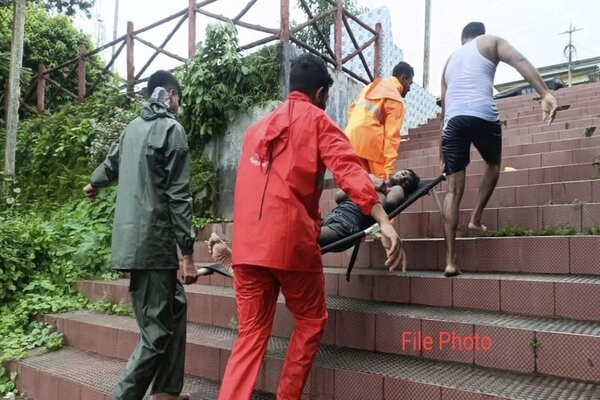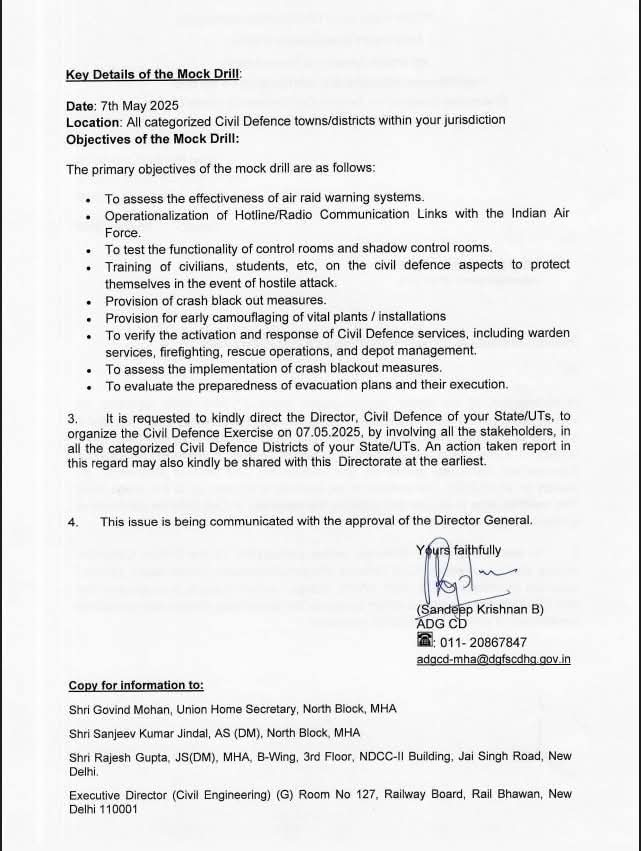
The Union Home Ministry has asked several states to conduct mock drills on Wednesday to evaluate civil defence preparedness.
Sources said that the measures to be undertaken include operationalization of Air Raid Warning Sirens and training of civilians and students on the civil defence aspects to protect themselves in the event of a hostile attack.
Sources added that the measures also include the provision of crash blackout measures, provision for early camouflaging of vital installations and update of the evacuation plan and its rehearsal.
A mock drill is a kind of a practice operation designed to prepare individuals for potential emergencies or critical situations.
The MHA's decision amid India- Pakistan standoff following Pahalgam terror attack is being viewed as a significant move. Media reports confirmed that the last such drill was held in 1971, the same year India and Pakistan went to war on two fronts.
According to the MHA letter addressed to Chief Secretaries of all States and Administrators of all UTs, the Ministry of Home Affairs has decided to organize Civil Defence Exercise and Rehearsal across the 244 categorized Civil Defence Districts of the country on 07.05.2025.
The conduct of the exercise has been planned up to the village level. This exercise aims to assess and enhance the readiness of Civil Defence mechanisms across all States and Union Territories.
In the Civil Defence Exercise, active participation of the District Controller, various district authorities, Civil Defence Wardens/Volunteers, Home Guard (active /reservists volunteers), NCC, NSS, NYKS, college/ school students is envisaged.
The Civil Defence Exercise is aimed to assess the operational efficacy and operational coordination of various Civil Defence measures.
The primary objectives of the mock drill are as follows:
* To assess the effectiveness of air raid warning systems.
* Operationalization of Hotline/Radio Communication Links with the Indian Air Force.
* To test the functionality of control rooms and shadow control rooms.
* Training of civilians, students, etc, on the civil defence aspects to protect themselves in the event of hostile attack.
* Provision of crash black out measures.
* Provision for early camouflaging of vital plants / installations.
* To verify the activation and response of Civil Defence services, including warden services, firefighting, rescue operations, and depot management.
* To assess the implementation of crash blackout measures.
* To evaluate the preparedness of evacuation plans and their execution.
(The news has been edited with the inputs from AIR News & other media reports)
.jpg)
